What is the Hina matsuri(Doll’s Festival)?
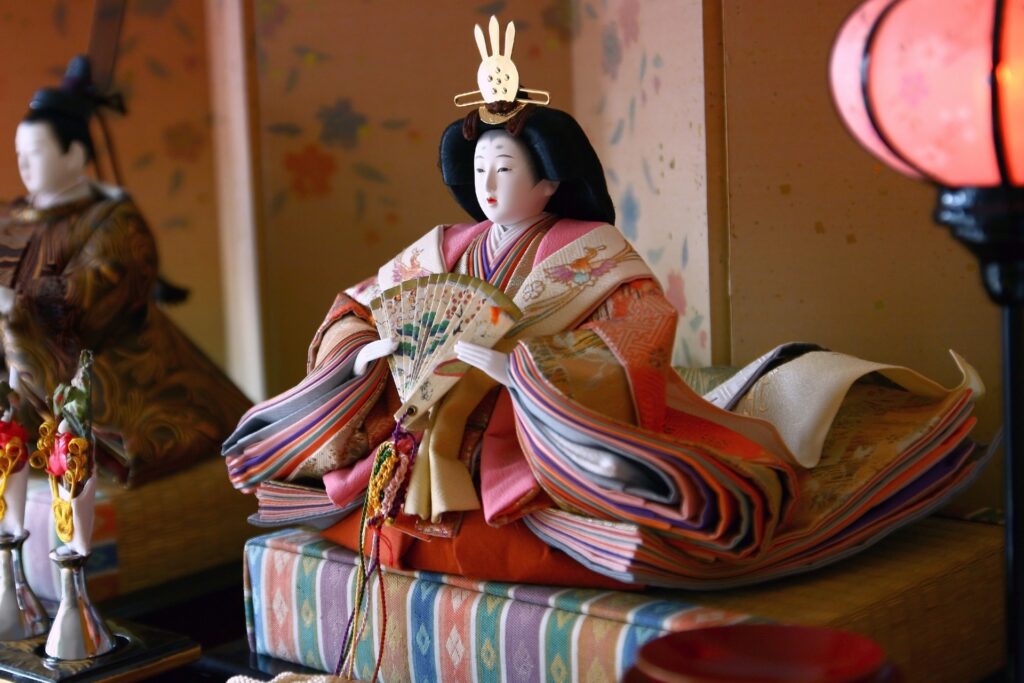
The Doll’s Festival is an event of “Momo no Sekku” on March 3rd, wishing for the healthy growth and health of girls.
Why March 3rd?
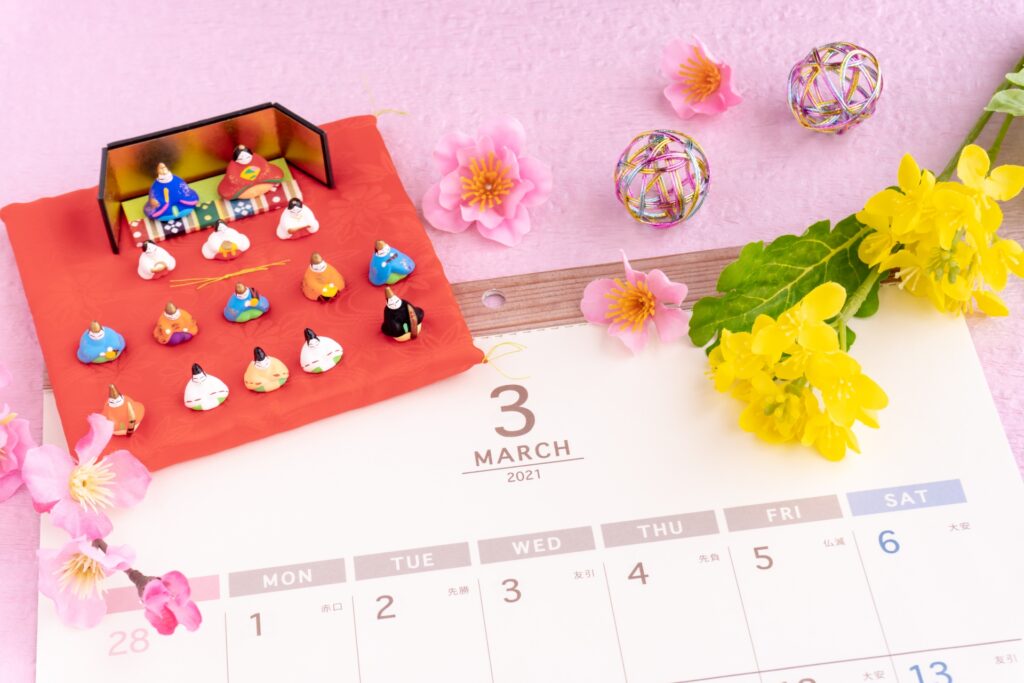
In the ancient Chinese Onmyodo, there was a custom of offering and praying on days when odd numbers of 1, 3, 5, 7, and 9 overlap.
This is the case with Joshi on March 3, Tango on May 5, and Tanabata on July 7.
In Japan, it became an annual event during the Heian period, and changed a little during the Edo period to become the official holiday of the Shogunate called “Gosekku”.
It was a rather important holiday, and it was a lively festival atmosphere.
Originally, there is no distinction between men and women in the festival, but in contrast to the Tango festival, in which the irises are hung on “Shobu,” the Kamimi festival has come to be enjoyed as an elegant girl’s festival.
Meaning of decorating
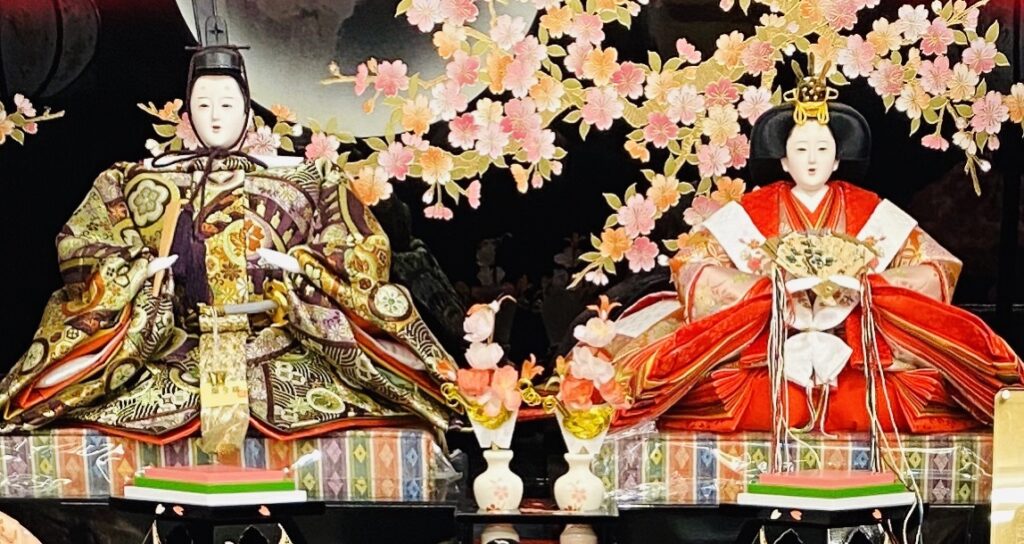
Where do you get the Kuge-style Hina dolls?
Apart from the festival, there was a little girl’s play called “Hina play” in Japanese public houses.
This word often appears in the story of Genji. In short, it’s a play house using dolls.
During the Edo period, women from public houses often went to the samurai family, who are proud of their power, to marry them, and Hina dolls were brought into the samurai society as a wedding tool.
Hina play with a gorgeous scent of a public house is popular among samurai families and wealthy tradesmen. It seems that the custom of enjoying Hina dolls was gradually born in connection with Kamimi’s festival.
Around the time of Yoshimune Tokugawa, the eighth shogun, gorgeous and large ones became popular against the backdrop of a bubble-like economy.
What does peach blossom mean?
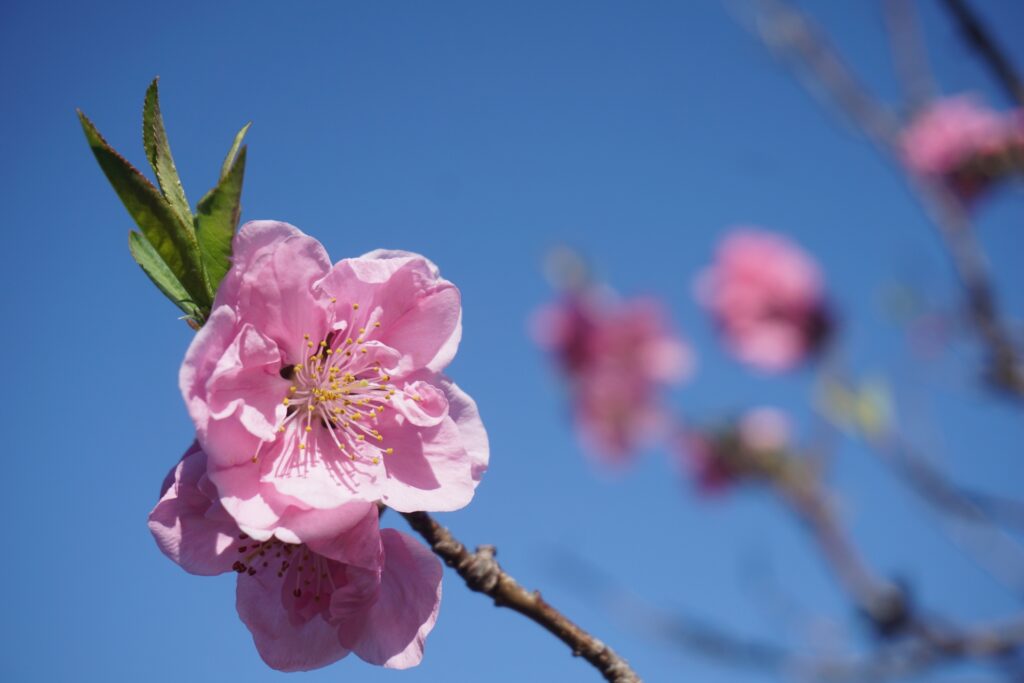
March 3rd of the lunar calendar is from the beginning of March to the middle of April.
Since it is the spring season when peach blossoms bloom, Kamimi’s festival is also called “peach festival”.
In China, the peach tree is considered to be a long-lived senki that does not repel illness or disaster, and there was even a ritual to drive away demons with the bow of the peach tree at Setsubun. Peach is a very auspicious plant.
Type
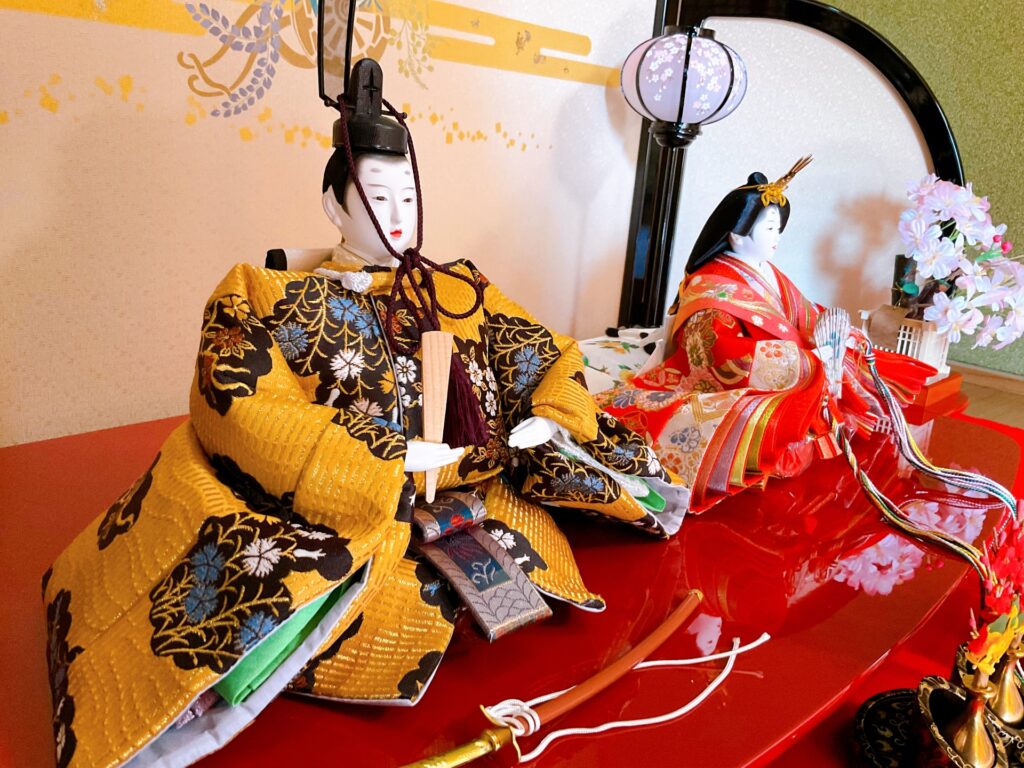
Kyoto chicks and Kanto chicks
There are two types of Hina dolls: “Kyo Hina” made in Kyoto and “Kanto Hina” made in Kanto.
[Kyobina]
・ A male chick sits on the left side (to the right) and a female chick sits on the right side.
・ Narrow eyes and gentle eyes and nose
[Kanto Hina]
・ A male chick sits on the right side (to the left) and a female chick sits on the left side.
・ Clear eyes and nose
In the court, the left side was once considered to be higher (for example, the left minister is higher than the right minister), so in Kyoto Hina, “Mikado” is on the left and “Princess” is on the right.
Kanto chicks are sitting in the “upper right” according to modern international standards. It is said that the upper right has penetrated since the Taisho era.
Of course, both are available in modern times, so it’s a good idea to choose according to your taste. In addition, most of them can be arranged freely.
How to decorate
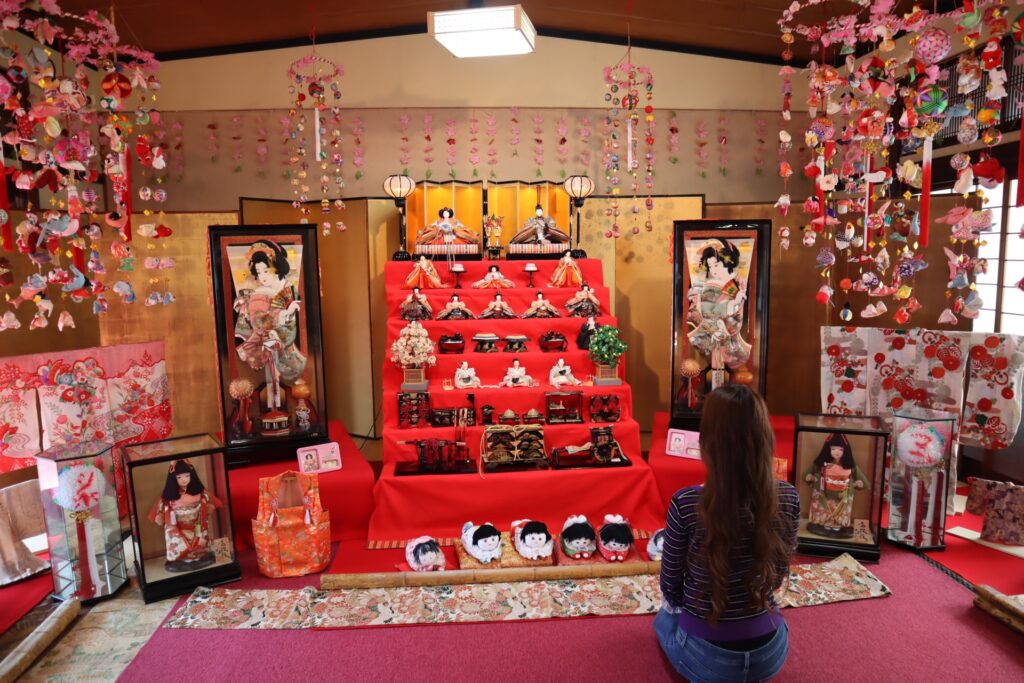
[Seven-tiered decoration]
First stage: Male and female chicks
Second stage: Three official women
Third stage: Five Hayashi
Fourth stage: Zuijin, Zuijin
Fifth stage: Shicho
6th and 7th tiers: Wedding tools such as dressing boxes, ox carts, and kago
The most luxurious way to decorate. Since there are 15 people in all, it is also called a 15-person decoration.
[Five-tiered decoration]
Up to the 3rd tier, it is the same as the 7th tier decoration, and it is common to line up the Zuijin and the binding on the 4th tier and the wedding tools on the 5th tier. This is also one of the fifteen decorations.
[Three-tiered decoration]
Type up to the third stage of five musical accompaniment. It also comes with a wedding tool so that it can be lined up around the five musical accompaniment. Also known as a ten-person decoration.
[Imperial prince decoration (two-person decoration, two-person chick)]
There was only one pair of male and female chicks, and this was normal until the Muromachi period. In modern times, there are high needs due to the space to decorate, and there are many types.
Food
Clam soup
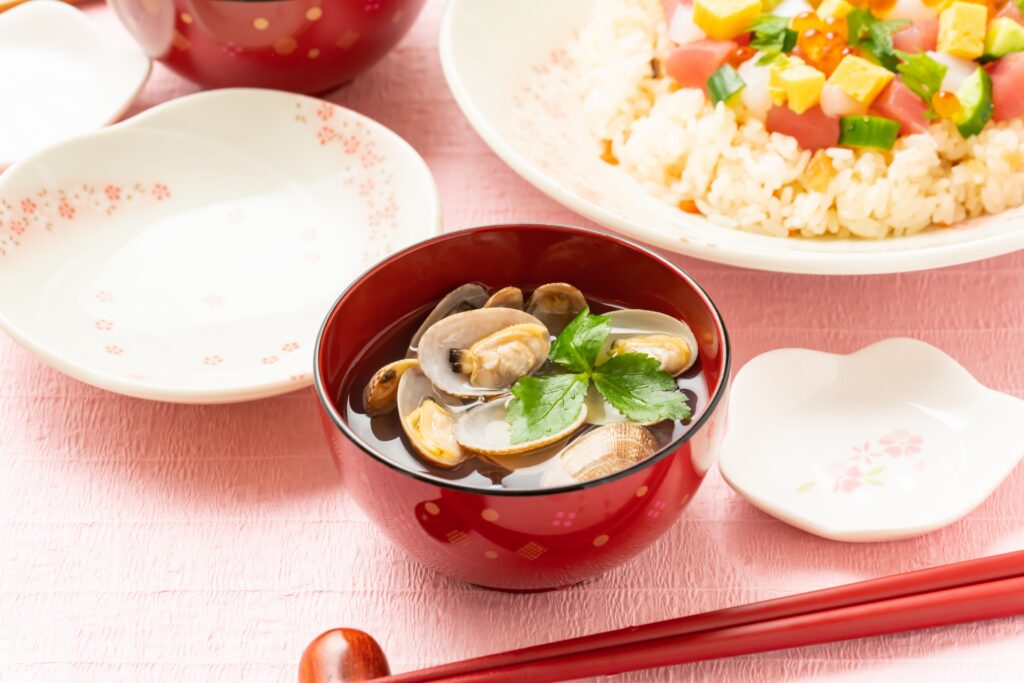
Only the clam shells that were originally paired fit perfectly, and since they were used for play such as kai-awase, they are named after a close couple who will stay with them for the rest of their lives.
Clams are in season from February to April. It’s the time of the Doll’s Festival.
Hishi mochi
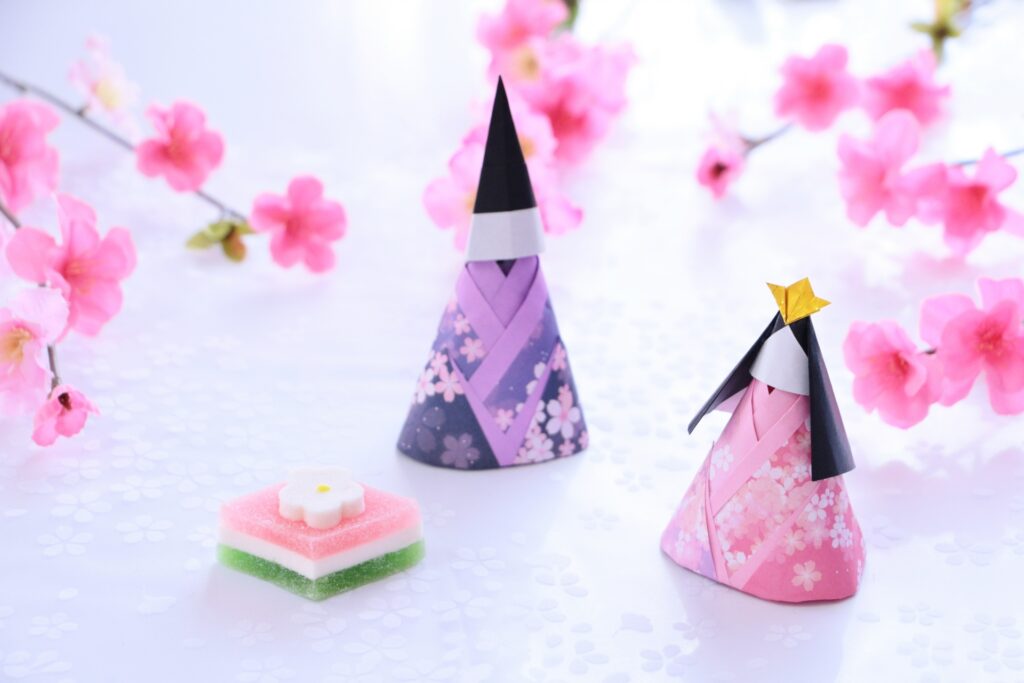
The trapa japonica (trapa japonica), which is a plant, spreads on the surface of the water and prospers, so the trapa japonica shape has long been popular as a symbol of growth and prosperity.
Hishi mochi, the festival of peaches, entrusts the wishes for the healthy growth and prosperous life of girls.
Hina-arare
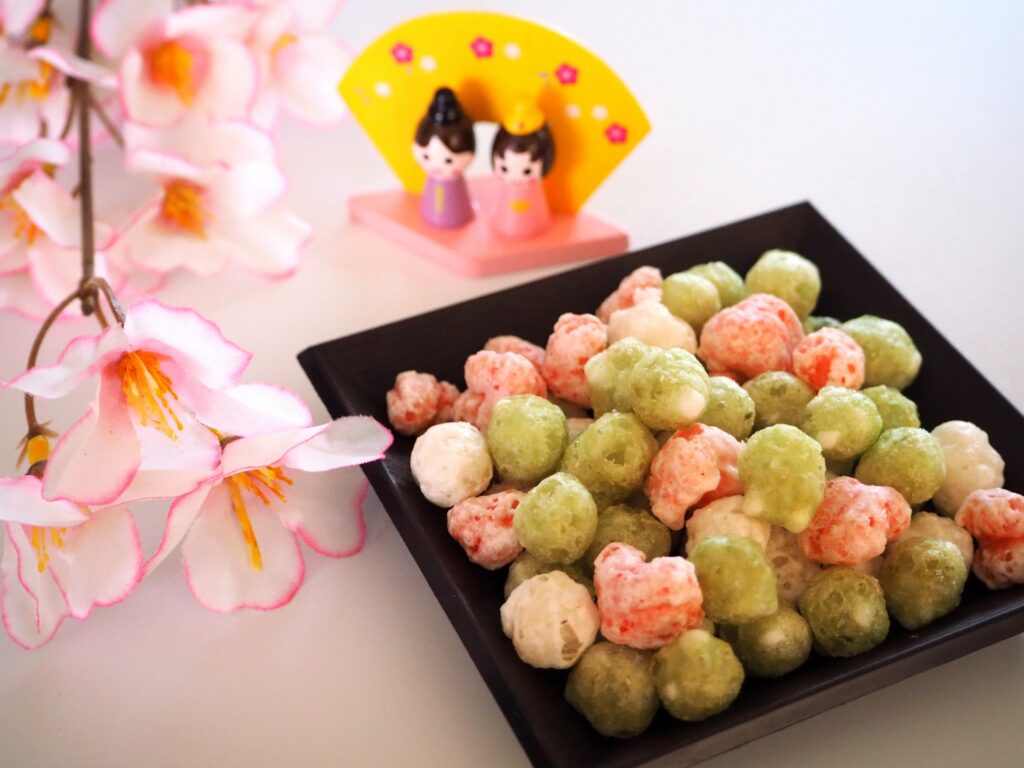
It is said that “Hina-arare” originated from crushing and baking the above Hishi mochi to make it easier to eat outside.
Also, in the Kanto region, “puffed grains” that are still in the form of rice are common.
Chirashi sushi
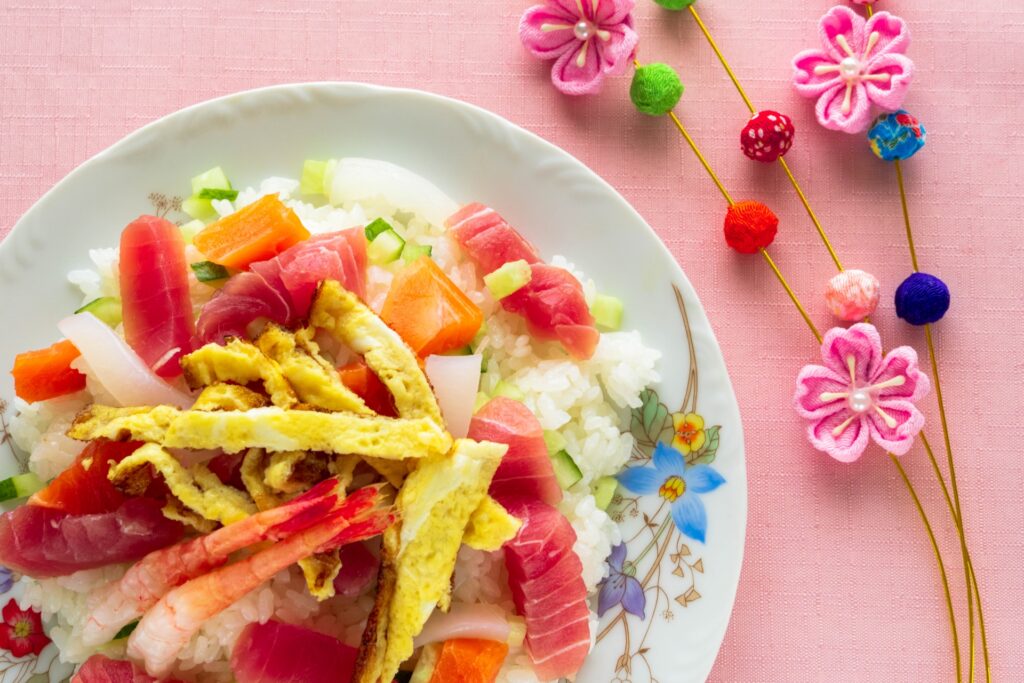
It seems that “Nare sushi”, which was once offered for each celebration, has gradually changed to “Rose sushi”, and the colorful “Chirashi sushi” has come to be preferred.
・ Shrimp: So that you can live longer until your hips bend
・ Lotus root: So that you can see far away
・ Beans: To be healthy and work well
These wishes are included in the colorful ingredients.
How was your trip this time?

A typical Japanese traditional event is a Japanese culture that is a bit different from traditional crafts.
Since it is an event that sincerely wishes for the growth of children, it costs a little to prepare Hina dolls, but for the healthy growth of children, every parent prepares Hina dolls without hesitation.
It has become an important event in life.
Festivals are held grandly in various parts of Japan.
|
|
|
|
Next time preview
Thank you for reading to the end!
Also, I would like to post an interesting part of Kansai.
Then, have a good trip from now on! !!
PS. We provide various information about Kansai in Japan, so please feel free to contact us if you would like to visit or experience it!
The content of the homepage is limited to Nara prefecture, but if you have a place you would like to visit, please contact us and we will guide you!!!

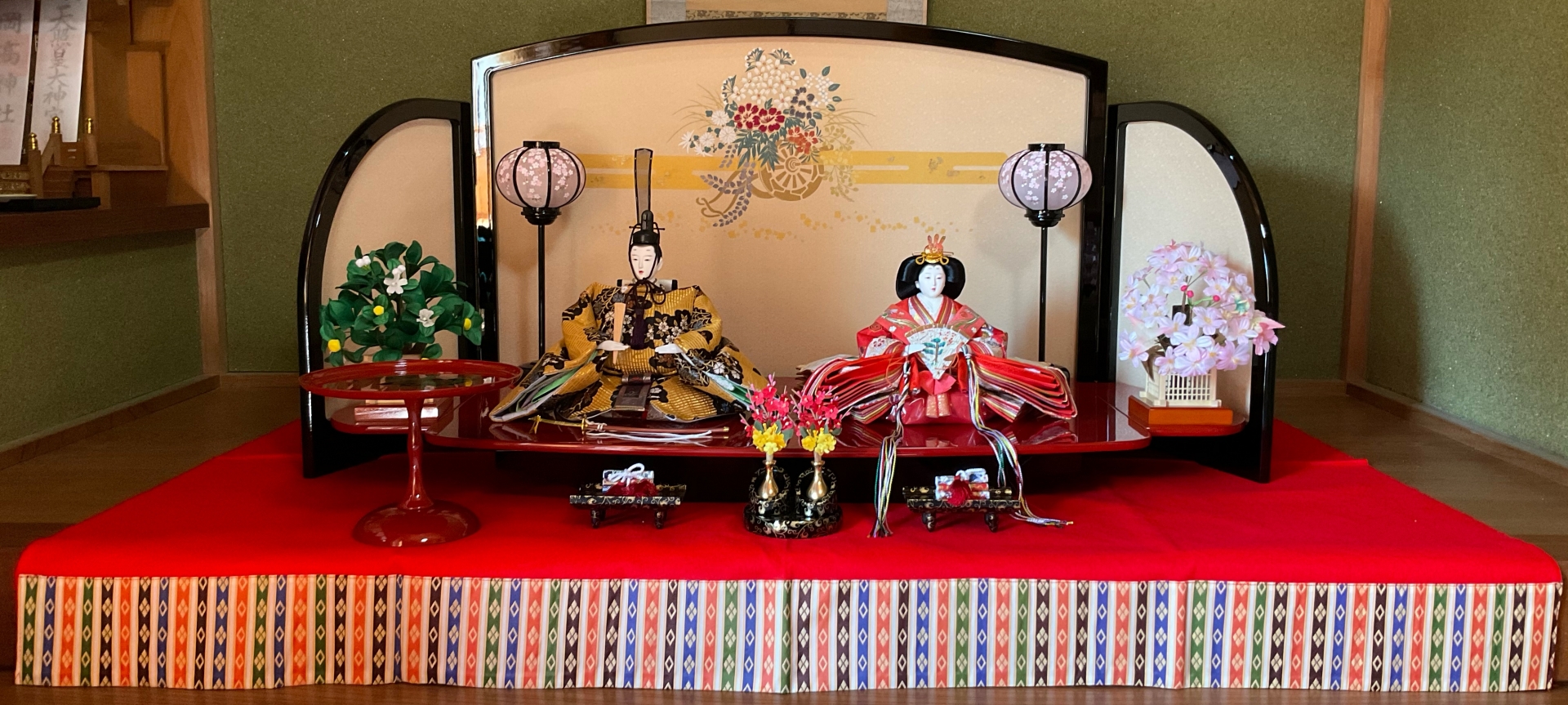





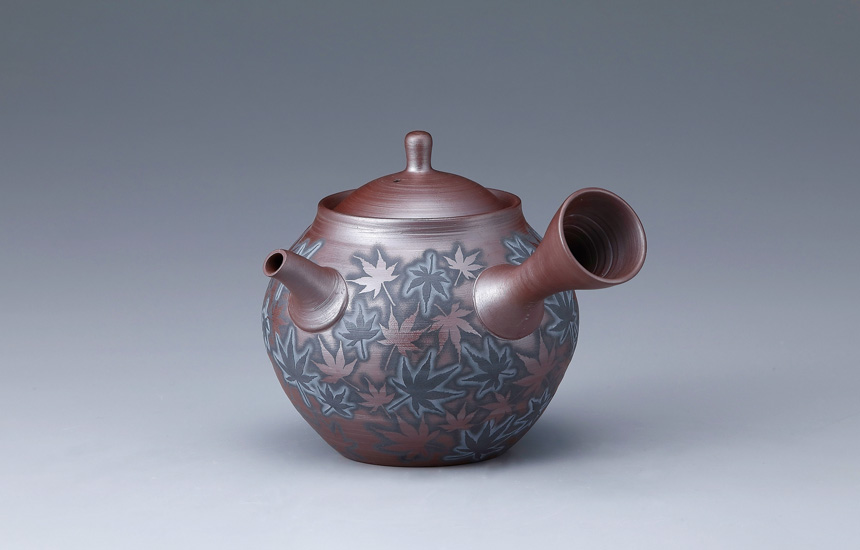
コメント